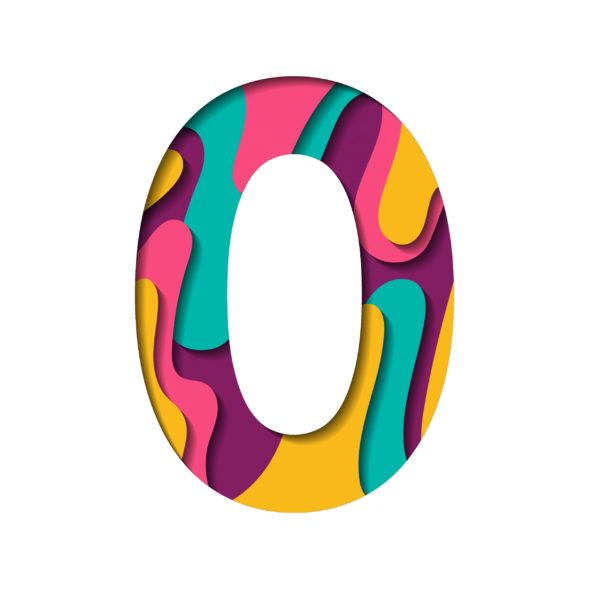Believe it or not, the concept of zero is actually pretty abstract for a young child. It's not something that a child can experience through the senses, as with other Montessori math materials. Many education methods teach the concept of zero in much of the same way kids learn the concept of zero in Montessori.
I mean, zero is nothing. The written number “0” literally represents absolutely nothing.
This can be a difficult concept to grasp. Let's learn how to introduce it.
So, how does a child learn the concept of zero in Montessori?

How to teach the concept of zero
If you haven't read about the Zero Game, I highly suggest clicking this link and reading about it.
The game is a lot of fun, it's an effective way to introduce the concept of zero, and the materials can be replicated at very little cost.
Not only is this the first time working with the concept of zero, but it's the first Montessori activity that has them working with loose quantities.
This is the point when math starts to get fun for kids.
And speaking of fun, there is another more super fun Montessori activity that will help solidify a child's understanding of the concept of zero. It's called the Memory Game.
This game is best suited for a classroom, as it requires 11 participants, however, there is no reason for all of the participants to be children.
So, parents, grandparents, family friends, and older siblings can comprise your 11 participants.

(You could also play this game with fewer children and use lower numbers, however, it won't be nearly as challenging, which could take some of the fun away.)
Here are the materials you need:
- Basket
- Random materials ranging in quantity from 0-10
- Number “tickets” (small pieces of paper with 0-10 written on them)
Here is how you play the game:
- Have the 11 children sit in a circle on the floor
- Giving a reminder not to peek at their ticket, have each child get one ticket from the container.
- Go around the circle and tell each child what objects you would like them to get. (pencils, books, blocks, ect.) Then they may look at the folded ticket and they can go and get the number of objects that is written on their tickets.
- When the children are finished collecting the items, have them return to the circle.
- Have each child count out the number of objects he brought to the circle. They may now check their tickets to see if they retrieved the correct number of items.
- Of course, one of the children is going to have the ticket with the number zero written on it. This is the opportunity to discuss with the group of children that zero means nothing. And that is why the child did not bring anything back to the circle.
To introduce the concept of zero a child, there is no need for Montessori materials or formal games, though!

You can ask your child to hop on one foot 3 times and then ask them to hop on one foot zero times.
Or ask your child to place 7 apples into your shopping basket and then ask them to place zero oranges in the basket.
You can use this opportunity to discuss with them that zero means nothing.
Also, counting songs, like “5 Little Monkeys” are helpful for reinforcing the concept of zero, as well.
Just be sure to use your fingers to represent the numbers while singing the song, then close your hand and shake your head “no” when there are no more monkeys left.
Why is the concept of zero important?
It's so important for kids to understand the concept of zero. Understanding this concept isn't as simple as learning that zero means “nothing”.
Zero will be used as a placeholder in all of the math they will soon encounter.
Zero is the difference between the number 408 and the number 48. Basically, zero is kind of a big deal.
There is no need to introduce zero as a placeholder just yet, though.
First, let them get a grasp on the concept.
I hope you enjoyed this article. For more Montessori-related learning and parenting advice, make sure to subscribe!
Cheers and don't forget to subscribe!

Pingback: The Zero Game — The Montessori-Minded Mom —Zero can be fun!